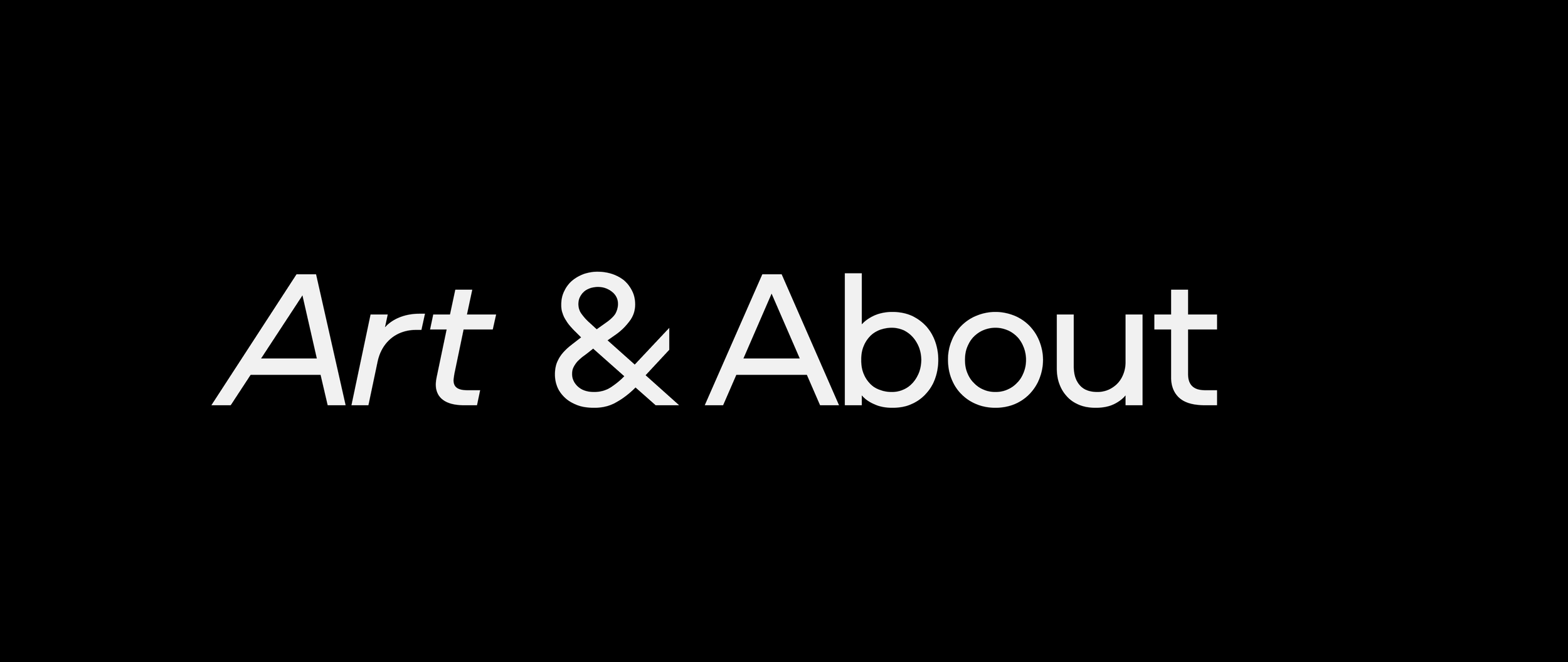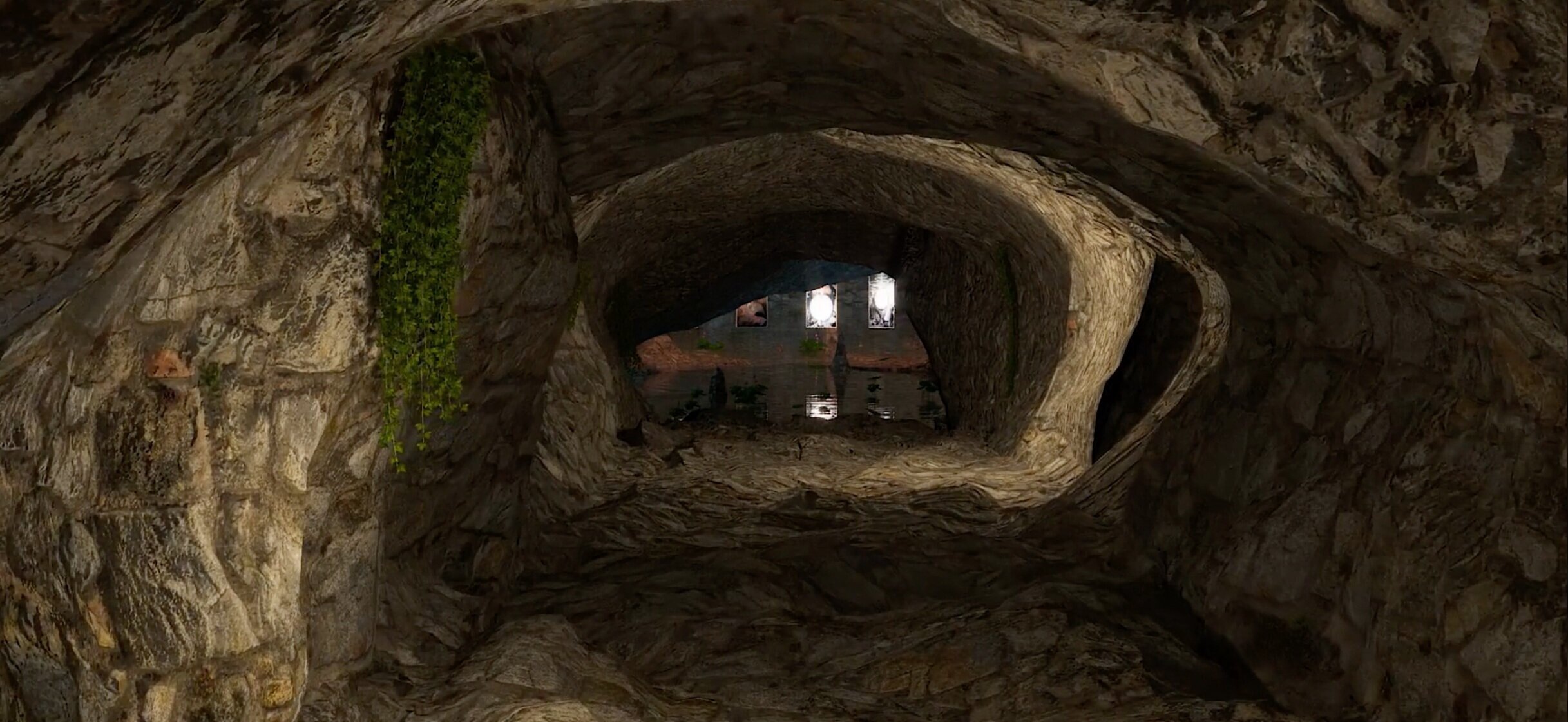Yulia Pinkusevich "Calm Under the Waves in the Blue of My Oblivion"
By LINDSAY COSTELLO
Shamanism is in our DNA. This practice, involving varied methods of altering consciousness in order to commune with spirit realms, dates back to the early Paleolithic era. There’s something innately human about it. Shamanism contends with our core questions. How might we be healed? Could we be guided by energy grander than our own?
In Yulia Pinkusevich’s Calm Under the Waves in the Blue of My Oblivion, the artist explores their maternal ancestral roots in Siberian shamanism of Russia’s Sakha region. Indigenous practices, including shamanism, were largely eliminated by colonizers and Stalin’s regime, creating a multigenerational cultural void. (Outside of a few academic journals, I can find little information on Siberian shamanism on the Internet.) Pinkusevich, who was born in Ukraine (USSR) and fled with her family upon the Soviet Union’s collapse, creates a profound reflection on indigenous knowledge through her works, pulling from her own journey alongside that of Siberia’s pre-colonial ancestral society to forge revitalized connections.
Calm Under the Waves in the Blue of My Oblivion is a sensory virtual exhibition installed on Archer Gallery’s website. My encounter begins in a digitally-rendered cave space. Gradual drips of water echo from somewhere unseen. Four of Pinkusevich’s charcoal and pastel works hover over a still pool in the cave. I leave the cave and advance through the exhibition by clicking a button: “Begin the Journey.”
The cave space is smart. It conceives of a deep, earthy, almost erotic space within the flat plane of the computer screen. Considered through the lens of shamanism, the cave might represent a descent, an interior space, or a dark night of the soul. This push and pull—wherein Pinkusevich creates environments that feel subtly surreal, yet soothing—is felt throughout the exhibition.
Sakha Earth Spirit (Buor kut), a 74” x 38” charcoal and pastel drawing, maintains Pinkusevich’s dreamlike approach within recognizable natural space. A dense tree’s roots scramble downward, but end in a formless, misty realm. An infant among thistles clutches her toes. There are hints at narrative: a face in the trees, a snake over the tree’s roots, a flag, mountainous forms. Buor kut, a Sakha term, translates to “body,” one of the three initial elements of spirit.
Sakha Earth Spirit (Buor kut)
Sakha Air Spirit (Salyyn Kut)
Pinkusevich then moves toward abstraction in Sakha Air Spirit (Salyyn Kut), a charcoal and pastel drawing of undulating, blush-colored forms resembling clouds, galaxies, or rippling pools. The artist’s drawings illustrate legends untold; the viewer is left to intuitively fill gaps. In mystic practices, air is often associated with the mind, and Sakha Air Spirit (Salyyn Kut)’s billowing forms do suggest an interior, emotional space.
Path (Tree of Life), a third pastel and charcoal drawing, brings in references to widespread mythological themes and stories. The central form of the drawing resembles the cosmic egg, a principal motif of many cultural cosmologies. The tenth-century visionary Hildegard of Bingen depicted a similar shape, as did Agnes Pelton and Hilma af Klint. Braided, snake-like figures with human faces wind together inside the egg, ending in a form resembling the Rod of Asclepius. The egg is surrounded by signs of life—trees, birds, and humans suggest a natural, cyclical reliance on the cosmology depicted here.
Sakha Mother Spirit (ije-kut), Pinkusevich’s last drawing in the exhibition, feels definitive. At the base of the drawing, a silhouetted figure on horseback holds a flag high, surrounded by symbols and petroglyph-like patterns. Above this scene, a pastel orb floats, flawless and glowing. The idea of a Sakha mother-spirit or mother-soul comes through clearly here, as though each drawing shown prior to this one was steering toward a spiritual transcendence. Again similar to Pelton and af Klint, Pinkusevich unites the mystical and the scientific, with diligently rendered forms alongside swaths of color and symbol that feel like automatic drawing.
Path (Tree of Life)
Sakha Mother Spirit (ije-kut)
The exhibition concludes with Manifold. Set to a foreboding electronic soundtrack by Paisiz, the video depicts abstracted, black-and-white waves of liquid rushing toward the viewer, askew and heavily contrasted. The waves crash and flow for a little over three minutes, and I notice myself becoming entranced by the balance of repetitive movement and sound.
I’m left wondering if Manifold could act as a digital shamanism. I watch the video again, this time in a dark room with headphones. Altered consciousness balances on the edge of possibility.
Calm Under the Waves in the Blue of My Oblivion is viewable online and has been extended until April 25, 2021.
Lindsay Costello is an artist, writer, and herbalist-in-training in Portland, OR. She has written art criticism for Hyperallergic, Art Papers, Art Practical, Oregon Arts Watch, and many other publications.





